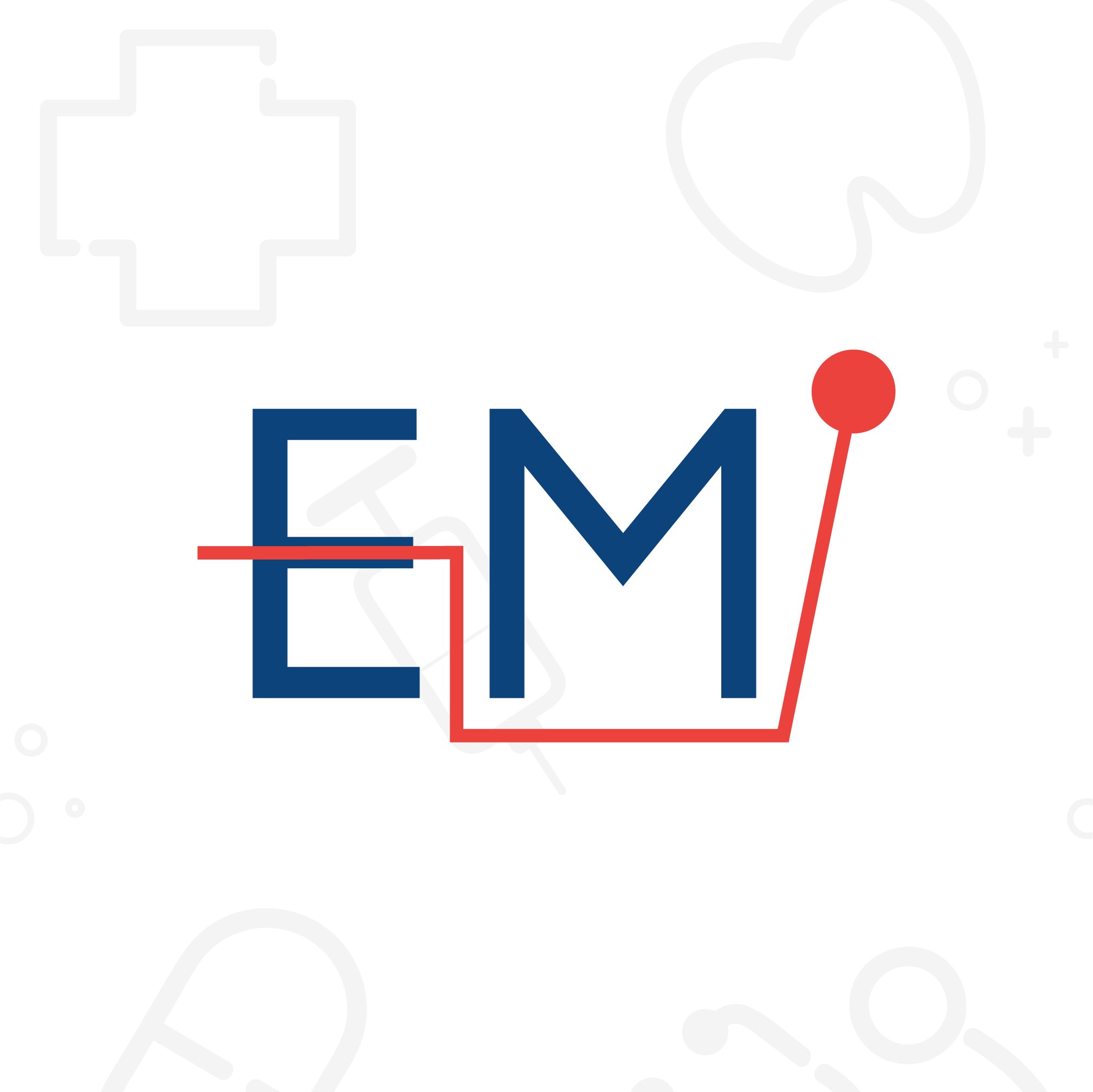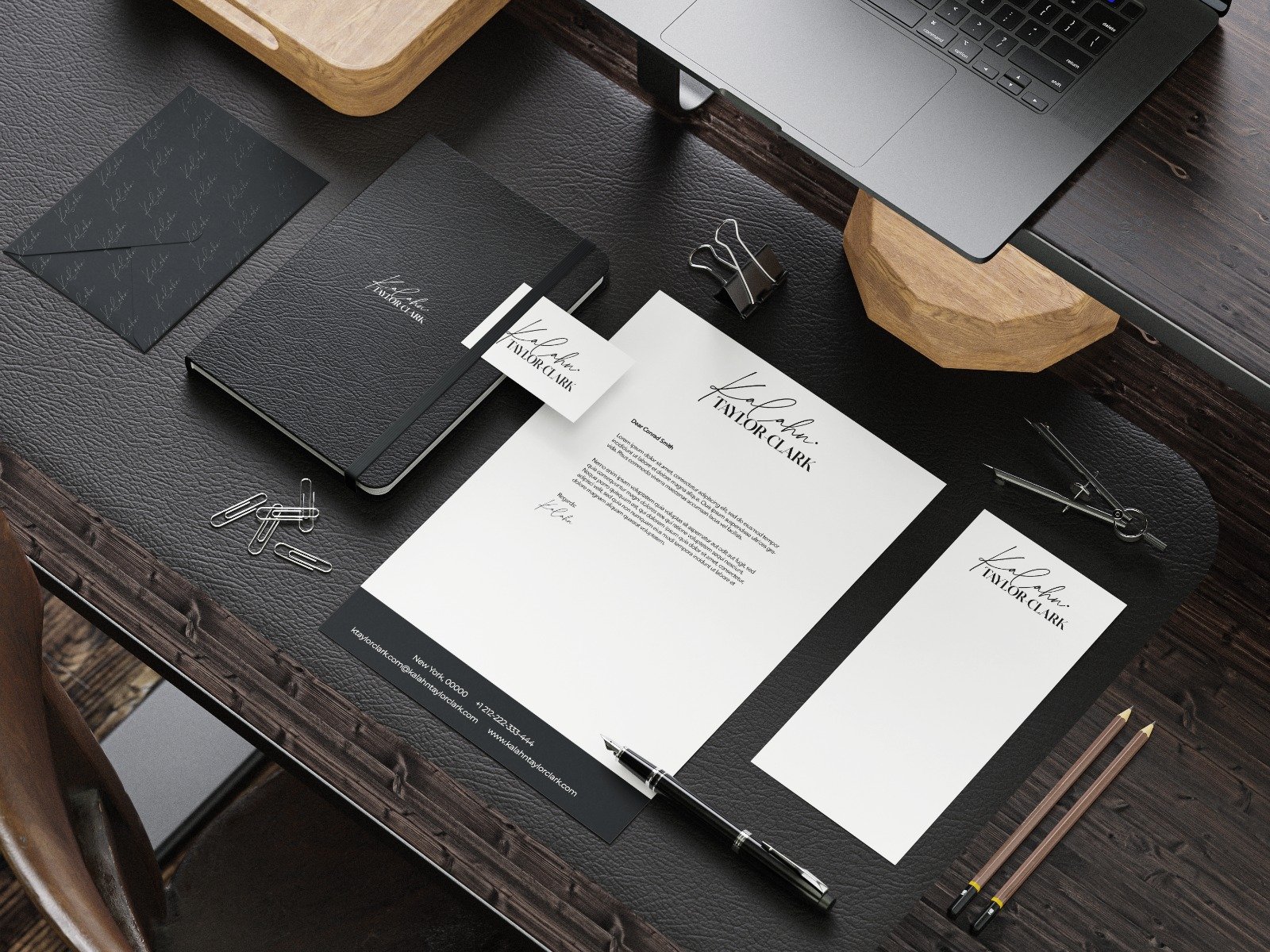4 Key Steps to Establishing Your Brand Identity in 2024
Originally published Aug 17th, 2017, Updated April 14th, 2024
This week, I want to talk with you guys about our design process. I understand that many out there just see a hefty price tag, or what they perceive as a hefty price tag, simply because they do not understand the journey that has to take place in crafting the perfect logo and visual brand identity for your business.
Step 1: CRAFTING THE BRAND MOOD BOARD
Any strategic designer would first sit down with you to narrow down and pinpoint your goals and objectives. So, after the deposit has been made, the contract signed, and you've been assigned a project start and end date, clients receive a welcome email that guides them to start pinning on Pinterest.
At our studio agency, we use Pinterest to build an inspiration board that we then develop into a mood board. Over the years, I've found that clients may have key words or "brand words" (words selected to describe their brand), but their visual interpretation may differ from what Google or even the design world perceives. It's common for clients to say, "Oh, that's not what I had in mind for what 'romantic' looks like; I meant this," and then proceed to send a picture. In my amateur freelance days, I had no structured process, leaving too much room for error for both the client and myself.
It's these years of experience that have allowed me to craft a better, more fluid experience for clients. Everything is now very structured and clear, although I'll be honest, there's always room for improvement, and there still is.
Anyway, let's return to the Inspiration Board phase. After receiving the email with instructions on being added to your secret client board on Pinterest, you also receive a workbook to identify your ideal client. These are the main two components of the client homework.
Building the board is super fun for most clients because it gives them a chance to explore what they truly want their brand to look like. In Pinterest, they get acquainted with what good design style looks like. On Google, there are many horrible design options, so it's great for the client to be exposed to great design and see what their brand will truly stand next to when they launch their visuals into the real world!
Then, about a day before your project start date, we get on a call. This call is scheduled into the calendar using our calendar booking app of choice, Acuity, (if you are looking for a booking app for your business there are tons of great ones that are free such as Cal.com, Calendly, and even Google Workspace/ Gmail has one now). On this call, we transition from an inspiration board to a mood board by removing items that just don’t seem to fit.
Sometimes clients pin a whole bunch of material, and the board's theme hasn't quite come together yet. So, the call is our opportunity to refine it. I share my screen during the call, and we clean it up. When we're done, you're able to see a clear theme, aesthetic, essence, and feeling of the brand. And if you don’t know already, branding is about how people feel when they make any sort of contact with your brand!
Step 2: Design with Strategy
After wrapping up the previous stage and having a call to assist the client in developing a design strategy that resonates with their audience and builds a cohesive brand, we dive right into designing the logo the following day.
Here's the thing: once we've established a strategy and laid the groundwork, the goals become crystal clear. There's no need to blindly create a plethora of options to present to the client.
Strategic design aims to solve a problem. Once the design accomplishes this, it's more about what resonates with you. Of course, it's important that you like it, but approval isn't based solely on aesthetics. We focus on what works and what ultimately solves your problems. This approach is more strategic than choosing a logo solely because it looks nice. While aesthetics are important, pairing beauty with functionality is key! You can quote me on that.
I have adopted a streamlined approach to logo design, offering clients a single draft to review. This is called the One-Concept Method. This method allows me to focus on crafting a solution that aligns perfectly with their vision and strategic objectives. By thoroughly understanding the client's needs and preferences, I can confidently present a design that not only meets but exceeds your expectations. This approach fosters efficiency and clarity, eliminating the need for multiple options and ensuring a more focused and effective design process.
Once the initial concept is finalized, complementary alternate logos and monogram designs are prepared and included for presentation. This comprehensive approach enables clients to evaluate the brand logos from a holistic perspective, ensuring a thorough understanding of the design direction.
Once the client is satisfied and approves the logo, we proceed to develop the other elements for the brand and collateral pieces. What are collateral pieces you might ask, keep reading you’re about to find out.
Step 3: Supporting Pieces
In Step 2, we discussed the focal point of logo design, often overshadowing the broader concept of branding. Today, we’ll get more into the realm of collateral pieces.
Collateral pieces encompass the supporting materials of the brand, ranging from business cards and Facebook cover photos to notepad designs, social media templates, flyers, your website and more. These elements play a crucial role in reinforcing brand identity and conveying its message across various platforms.
I am going to tell you a secret building your brand especially the logo phase is such a soul searching experience for clients and requires lots of patience and back and forth from experience. I am not sure what you guys think happen but its a lot of work and because after you get your brand done and there is the possibility of no repeat business, this is why its not cheap.
This is something that is possibly going to last you a minimum of 3 years unless you decide to do a brand refresh. If you take the cost of logo design and divide by 36 months you begin to see that its not so expensive after all. When you get your brand developed we have created an identity for your fictional entity. Anyway back to the soul searching, often times clients get stuck obsessing over one element because they KNOW when they are done this is it, they do not want a do-over and they do not want to revisit the design. And this is totally understandable.
What I am trying to get at is that, creatives ought to be respected, the creations and the time that goes into the process needs to be respected and this is why I embarked on this series to really break down not just what to expect when designing with a studio or agency or even a designer that is truly passionate about proper design principles and ethics but the amount of work that goes into the final product. I know you see those seemingly “simple” and “easy to do” logos out there, however it took a process to arrive at the concept and executing that concept effectively.
For those looking to explore design options beyond professional services for their collateral pieces, tools like Adobe Express offer user-friendly interfaces for creating stunning collateral pieces. Whether you're a seasoned designer or a business owner seeking to enhance your brand's visual presence, Adobe Express can serve as a valuable asset in your branding journey.
This is why with my business there is a design calendar that clients get booked into. Can you imagine doing this for multiple businesses at a time? There will be so much creative strain and ultimately you won’t get the best of work from the creative team you are working with. So, if I went a little soap boxy for a moment please excuse me, but it is what it is and if no one is going to educate you, bet I will.
I really hope this series open your eyes and helps you to appreciate the process. It’s okay we are familiar with what clients are feeling, we are experienced with the process. Just be patient with the process and yourself and let us do our job which is to guide you and create the brand that make sense!
Step 4: The Brand Identity
At last, we've reached the finish line. The logo is finalized, the collateral pieces such as business cards and social media graphics are complete, and your brand identity and style guide have taken shape, populated with all essential elements: logos, sub-logos, fonts, patterns, and more. With some minor fine-tuning along the way, everything is now complete.
The true essence of the work lies in the initial groundwork and homework stages of the project. By carefully constructing the foundation with the right tools and strategy, your brand has a solid base upon which to thrive.
It's important to remember that branding goes beyond visuals; it's about what lies beneath the surface. Just as a structure doesn't make a home, the effectiveness of your brand visuals relies on the inner workings of your brand. This is where ongoing introspection and refinement come into play, and where business and brand coaching can provide valuable guidance.
Additionally, it's normal to conduct a brand audit or strategy session at least once a year to measure what's working and refine accordingly. This process ensures that your brand remains aligned with your evolving goals and audience preferences.










